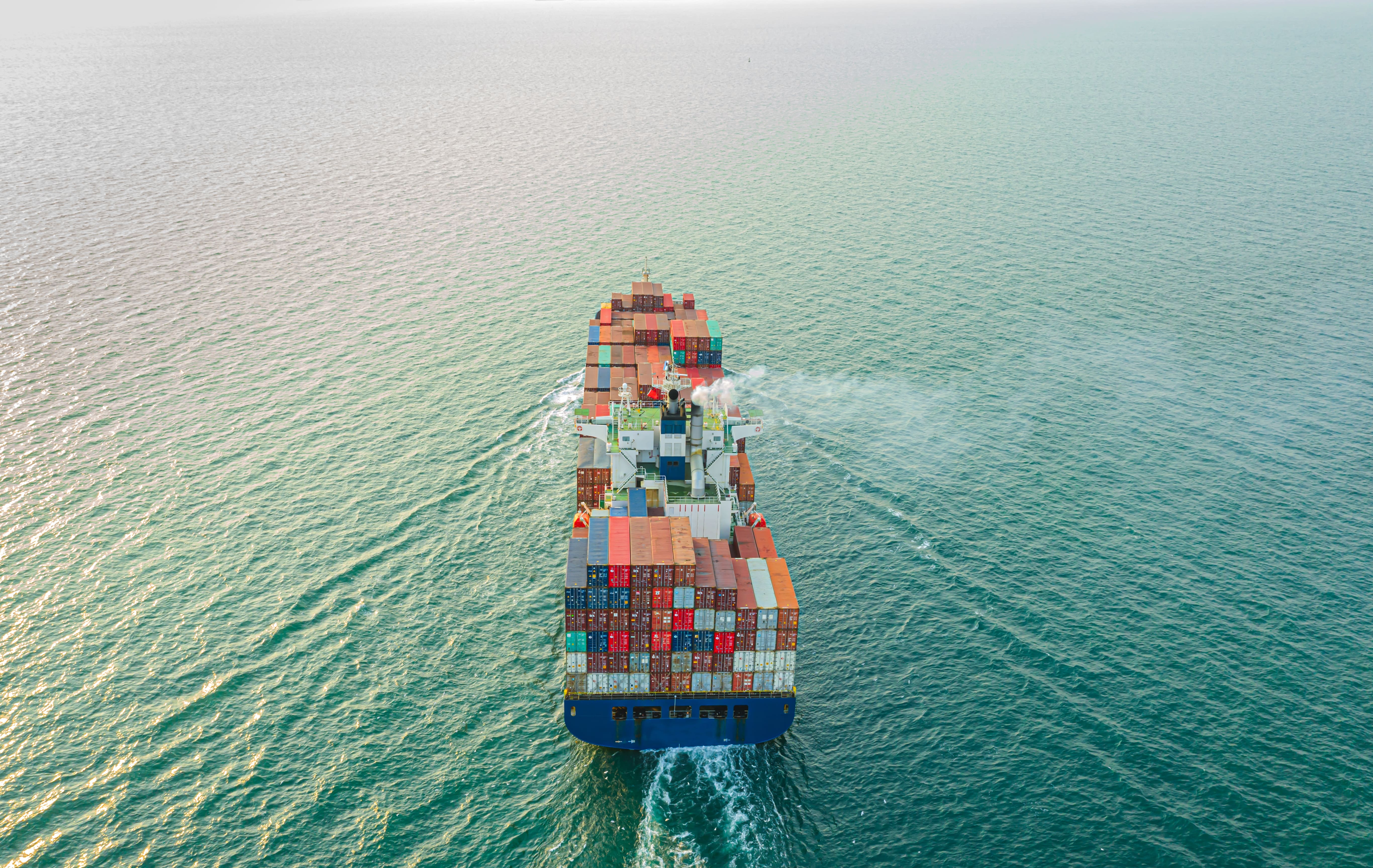In today’s market, it’s hard to find a multichannel retailer that hasn’t experienced the pains associated with at least one supply chain challenge.
In fact, data shows that 56% of retailers experienced moderate disruption during the pandemic and 12% experienced heavy disruption — and those are just the numbers from 2020. As we move forward into the era of post-pandemic selling, ongoing supply chain challenges continue to be a danger for multichannel retailers.
To scale your brand in the face of these challenges, you’ll need a multi-dimensional plan to pivot your supply chain operation quickly.
This article covers some of the most common problems facing multichannel retailers today as well as a game plan to help protect your brand from future supply chain issues that may come your way.
Table of contents
- 4 major supply chain issues for multi-channel retailers
- How to overcome supply chain issues and keep growth on track
- Create a solid game plan for managing supply chain challenges
4 major supply chain issues for multichannel retailers
In the age of lockdowns and ever-changing safety restrictions, there are countless issues that can crop up and put a dent in supply chain operations — which unfortunately, can also put a major dent in sales.
In 2015, it was estimated that $1.75 trillion was lost globally due to inventory issues. With the growth of retail, that number should be close to $2 trillion today.
The way you approach inventory and supply chain has everything to do with what side of that statistic you land on.
The good news? Awareness is the first step to solving expensive supply chain issues.
Let’s zoom in on some of the major world events creating supply chain challenges for multichannel retailers so you know exactly what to look out for.
1. Hiked-up shipping prices and costly delays
When the pandemic hit and businesses worldwide were brought to a standstill, it created a huge staff shortage and a backlog in shipments.
And just when it seemed these problems couldn’t get worse, overwhelmed ports and events like the Suez Canal incident added more fuel to the fire.
Then of course, there’s the Heavy Goods Vehicle (HGV) driver shortage in countries like the UK, leaving shelves empty and stores understocked. As a result of these delays, prices for shipping containers and land transport have skyrocketed.
Today, it’s not uncommon to see container loads triple their pre-pandemic price.
Multichannel retailers need to wait longer to get goods into territories as overwhelmed ports and customs battle through the backlog.
Many brands are forced to pass the increased costs over to customers, putting both their revenue and competitive edge at risk. All these problems have compounded to create the perfect storm in supply chains — especially for those serving multiple channels and countries.
2. Decreased manpower
Businesses are still experiencing the weight of the pandemic’s changes, including staff shortages from the ‘The Great Resignation’ and pressure to implement new processes in order to remain compliant with Covid-19 regulations.
For example, some warehouses have chosen to maintain a two-meter social distancing rule and have reduced their capacity — which means fewer people on-hand to manage key services.
Not only do these talent shortages make it more difficult to find manufacturers and suppliers who can meet your needs, they also increase the cost of existing labor which, as in the case of increased shipping and storage costs, is often passed on to the consumer.
3. Raw material shortages causing manufacturing delays
The pandemic hasn’t just slowed goods deliveries, it’s also affected the production of raw materials, creating far-reaching supply chain challenges like:
- Order backlogs
- Long waits for production
- Increased prices for raw goods
Yet demand for inventory has remained strong, pushing many stores to go big on their stock orders.
Retail brands are also placing orders for key shopping events early, in addition to their core baseline orders. While this is good practice, it also means manufacturers are stretched and are under pressure to extend production times, prolonging product shortages and making it difficult for multichannel brands to stay in stock.
4. Brexit-related challenges
From changes to taxes and tariffs to shifts in the movement of goods, Brexit-related supply chain problems are still ongoing. These issues are not only making selling from the UK to the EU (and vice versa) more complicated logistically, they’ve also made it more expensive.
For example, to sell on Amazon in the EU from the UK, it’s more cost-effective to store goods in an EU-based fulfillment center, rather than sell from the UK. This Brexit shift means multichannel stores need more inventory and cash flow in order to service orders.
Also, EU-based customers that buy from a UK store need to pay duties and taxes that weren’t required in the past, which could cause a dip in sales and customer happiness as prices rise.
How to overcome supply chain issues and keep growth on track
With all of the above rattling the world of global commerce, the question on many retailers' minds is: “How can I react more quickly to resolve supply chain issues?”
Two words: Strategic planning.
Let’s dive into some of the steps you can take to position your brand to beat supply chain issues.
First, conduct a risk assessment
To understand the problems your brand is exposed to, it’s important to audit your supply chain and assess the overall landscape of the niche or niches you’re in. Look out for potential problems and create a list. Next, run through the "what if" scenarios to shed light on all the things that could potentially go wrong.
Some vital areas to look out for include:
- Raw materials sourcing
- Manufacturing
- Freight
- Fulfillment
Build a supply chain response plan
Your next task is to take each risk you’ve identified and create a multi-pronged approach to solving the problem before it becomes a problem. This step alone can save you a substantial amount of time and money, so don’t skip it.
For example, if your forecast reveals that your store could start experiencing product shortages in the next month, you could:
- Look for local suppliers.
- Disburse buffer stock inventory across your channels.
- Temporarily increase prices.
- Temporarily stop advertising on products at risk of stockout.
- Aim to bring inventory more quickly (e.g., via air freight).
Create a strong cash reserve
Money talks, especially during a crisis.
To handle any unforeseen supply chain issues, aim to build a solid cash reserve separate from your existing operational budget. Increased cash flow gives you more flexibility and security to work with suppliers and other key stakeholders in the event of any sudden supply chain problems.
You can start creating a cash buffer by:
- Setting aside a portion of your profits
- Liquidating deadstock or slow-moving inventory
- Creating a short capital cycle
- Securing a credit line
Make supply chain optimization part of your store’s M.O.
To ensure your supply chain performs well consistently, commit to improving your supply chain at the strategic level.
By saying goodbye to the days of putting out fires as they arrive, you’ll be able to get ahead of your inventory and keep your revenue on a steady upward climb.
Not only that, you’ll also gain an edge over your competitors who wait for disaster to strike before taking action.
Here are some of the core ways you can improve your supply chain operations:
- Select suppliers who are reliable and equipped to handle your volumes.
- Use an inventory planning and optimization platform to improve forecasts and take the guesswork out of setting stock levels.
- Improve visibility by unifying all supplier and warehouse data in one central location.
- Audit your supply chain to streamline your suppliers and products across sales channels.
💡 Supply Chain Pro Tip: Look to other brands for inspiration
Another quick way to improve your supply chain strategy is to take notes from those who have already done it.
Because sometimes, the best thing to do is to think outside the box.
For example, HomeDepot’s DIY supply chain approach saw the company charter its own ship, buy merchandise on the spot market, and even fly in power tools to cope with supply chain challenges.
It may not be a strategy every brand can replicate, but it’s definitely one every brand can learn from. So don’t be afraid to check out how other businesses and industries are managing their own supply chain challenges.
Create a solid game plan for managing supply chain challenges
Supply chain problems are inevitable in today’s unpredictable market — especially for multichannel retailers.
But with some planning, analysis, and smart preparation you'll be ready for any issues that come your way.
Figure out what your supply chain needs in order to thrive and take action to put protective measures in place. Stay dedicated to optimizing your supply chain and remain flexible in knowing that change is the only real constant.
Whatever the wild world of multichannel retailing brings next, you’ll be ready for it.
Improving your supply chain can be easier than you think. Find out how Flieber can help you reset your operations.



-1.png)

